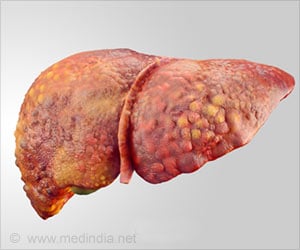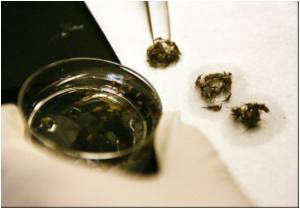
‘When a protein Rab10 is switched on, it will bind to a lipid droplet and cause the autophagosome to dock on the droplet surface, recruit other proteins, and digest the lipid into a free fatty acid energy source.’
Tweet it Now
While the mechanisms involved in fat accumulation are the usual
targets of research for fatty liver disease, clarifying the cell's
mechanism for breaking down fat also could provide valuable information
to fuel the discovery of breakthrough treatments in the future.Fueling the hungry cell
In a well-fed cell, fat deposits, called lipid droplets, are nutritional insurance. They are ignored by the cell as it fuels growth and division via its normal pathway. But, in a starving cell, the normal pathway switches off, and a recycling process, called autophagy, switches on. Autophagy is a way for cells to break down macromolecules, such as protein and fat, into their component parts to be used in cell processes.
Under starvation conditions, the cell's recycling pathway directs specialized vessels to engulf lipid droplets. These vessels, called autophagosomes, then link with another organelle, called a lysosome, which is filled with acidic enzymes. When these two merge, the resulting structure is called an autolysosome. Within the autolysosome, the enzymes break apart the fat droplet free fatty acids.
How does a hungry cell find the fat? It follows the beacon
Advertisement
"In this paper, we show that, when Rab10 is switched on, it will bind to a lipid droplet and cause the autophagosome to dock on the droplet surface, recruit other proteins, and digest the lipid into a free fatty acid energy source," says Li.
Advertisement
"Rab10 switches on and builds up around the lipid droplet," says Dr. McNiven. "Then, the cell activates its lysosomes that then targets these lipid droplets and goes after them. So this was an important step that we provided between the sensing mechanism of starvation and how that is signaling to this switch to go after lipid droplets."
Source-Eurekalert















